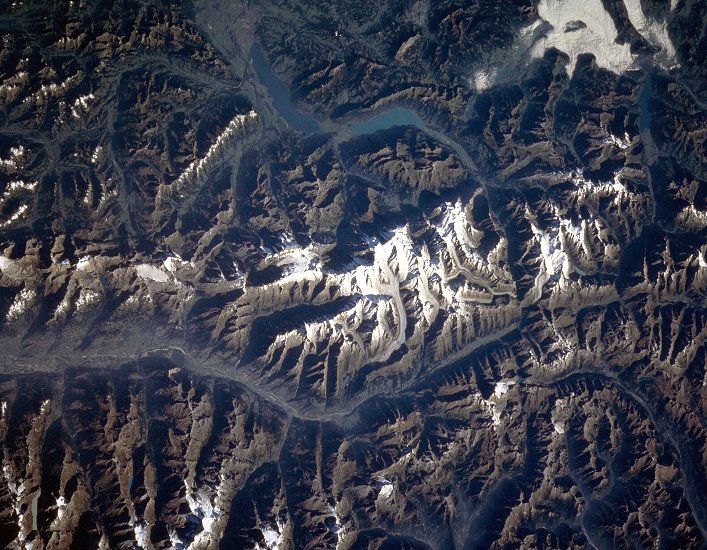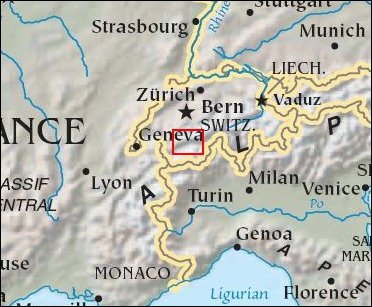| Earth from Space is a free eBook describing our planet from a satellite's perspective. Fore more information, please read the About pages. |

|

Home  Europe Europe  Switzerland Switzerland  Bernese Alps Bernese Alps |
|
| See also: Glaciers of the Bernese Alps | |






|
|
Bernese AlpsPosition of center of photo (Lat/Long): [46.57484/7.95128] |
|
  The Bernese Alps form the centerpiece of this late summer view of Switzerland; Jungfrau (4158 m) The Bernese Alps form the centerpiece of this late summer view of Switzerland; Jungfrau (4158 m) On the southern flank of the Jungfrau massif is the Aletsch glacier, meltwaters of which feed the upper Rhone; another source is the Rhone glacier at the eastern end of the valley. One estimate holds that roughly half the ice in glaciers of the European Alps has melted since 1850. U-shaped valleys carved by glaciers are clearly visible; some, such as that of the Rhone, have been modified by through-flowing rivers. The Swiss Alps are elements of a great mountain system that was constructed as Africa and Eurasia collided, starting more than 90 million years ago. Ancient basement rocks (>325 million years old) of the Bernese Alps were uplifted, folded, and forced northward between ~29 and 10 million years ago. |
| Source of material: NASA |
Further information: WikiPedia article on Bernese Alps
Last Update: 2011-03-30

